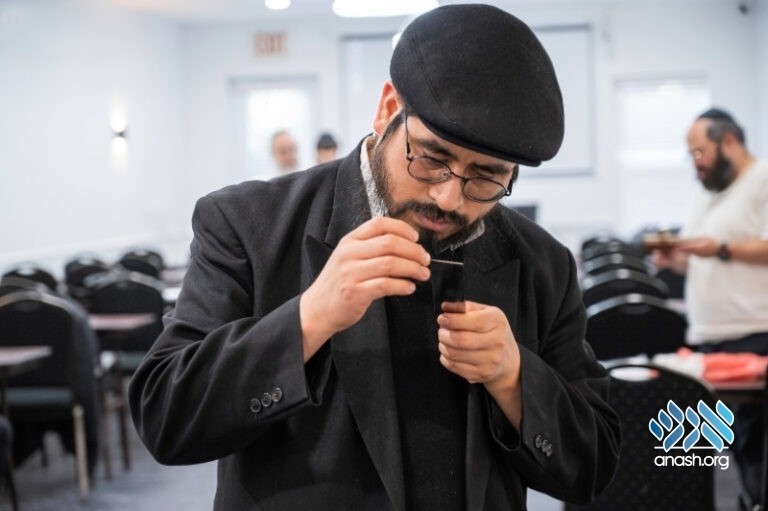Ask the Rov: What are the unique chalofim that were adopted by chassidim and how is it relevant today?
By Rabbi Chaim Hillel Raskin – Rov of Anash in Petach Tikvah
In order to be kosher, the shechita knife must not have any nicks or blemishes, which can disqualify the shechita. At the same time, a shochet endeavors to keep the blade sharp so it can cut without any struggle and avoid shailos.
For many generations, the shechita knife was thick from back to front, and it was a great skill to keep it sharp without getting a nick. One of the takanos of the Mezritcher Maggid and his talmidim was that the shechita knife should be melutash, narrower toward the point, making it easy to sharpen and smoothen it. The Alter Rebbe considers this a great mitzva which his Rebbeim held onto.1

Misnagdim at the time greatly opposed this takana, arguing that this was something new not found in the earlier sources, and they forbade eating meat shechted with these knives.2 In a letter of response, the Alter Rebbe explained that although the regular knives can also be smoothed and sharpened, it is much more difficult, and not all shochtim will master that skill. With the melutash knives, on the other hand, it will be accessible for all shochtim to sharpen them easily and properly.3
Some explain the specialty of this type of knife is that it is less prone to get blemished and that even when sharpened, it remains straight and doesn’t become rounded.4 Additionally, since the blade is thinner it is easier to feel if there is a nick.5
With time, the takana spread to other communities, until today, it is apparently unanimously accepted to use such knives.6 It is nevertheless important for the knife to be smooth without blemish and to be frequently and properly checked to be the case.
After shechita, the knife not only by looking at it but by actually feeling it (with the nail).7 It is important to do the check slowly and thoroughly while standing.8
When shechting many chickens, the knife should be checked regularly to ensure that it did not contract a blemish and it is smooth. (If it is found to have a blemish, all the animals shechted since it was last checked are considered invalid.) For added hiddur, the knife should be checked more often to make sure it is perfectly smooth.9
See Sources (open PDF)
From The Weekly Farbrengen by Merkaz Anash

For Rabbi Raskin,
If you know absolutely 100% that a shochet (and sofer) is not religious and Yiras Shomayim and you tell his Bes Din and they do nothing, do you have an obligation to protect Anash from a non-religious Shochet and Sofer?